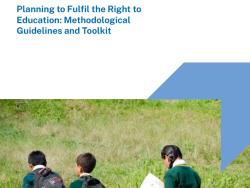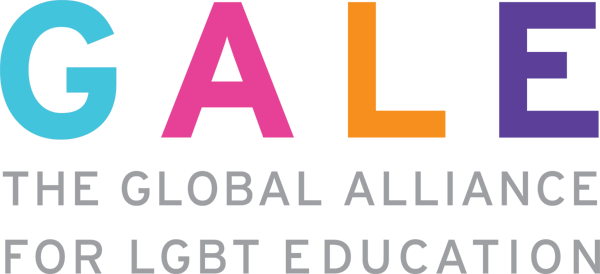Review of the new UNESCO tool to fulfil the right to education

March 6, 2023, 2023 - UNESCO has published a new set of tools to guide the implementation of the Right to Education. This review of the tools and their background shows how international perspectives gradually embrace a true inclusivity of the Right to Education. International experts include gender identity and sexual orientation in their views, although these views have not yet been legally endorsed by all States. Still, the news tools offer opportunities to include inclusion of SOGIESC in educational monitoring and policy planning of States.
Context: the international Right to Education legal framework
Education has internationally been recognized as a human right since 1948, the year when the Universal Declaration of Human Rights (UDHR) stated that ‘Everyone has the right to education’ (art. 26 [1]). Since the proclamation of the UDHR, the Right to Education has been asserted in a multitude of legally binding and non-binding international treaties and documents.
Such a wide variety of international documents and treaties spurred the necessity to create a new document aimed at compiling, analyzing, and unpacking existing human rights laws. In response to this need, the Abidjan Principles were finalized in February 2019. Like the Yogyakarta Principles on SOGI issues, the Abidjan Principles do not create any new laws or obligations for States. However, they provide concrete guidance on the States’ obligation to establish free, quality public education systems for all based on already agreed rights in existing international documents and treaties. The Abidjan Principles were published after a three-year participatory consultation and drafting process. The Principles were signed by eminent experts in education, international law, and human rights. Although the Principles are not legally binding, they have been recognized by several United Nations and regional human rights institutions and mandate holders working on the Right to Education, including the European Committee of Social Rights (2020); the African Commission on Human and Peoples’ Rights (2019 and 2020); the Human Rights Council – United Nations General Assembly (2019 and 2020); the Inter-American Commission on Human Rights (2020); the United Nations High Commissioner for Human Rights (2019); and the United Nations Special Rapporteur on the Right to Education (2019), among others.
The new tool
The purpose of the new UNESCO tools is to help education stakeholders systematically collect and analyze the efforts put in place to ensure the Right to Education. The final goal is to mobilize all information to nurture a constructive dialogue among key national stakeholders and to strengthen the Right to Education at national and local levels. The tools were originally conceived to support States in the planning process, but they are flexible enough to be utilized by other relevant entities or partners at the national level (independent human rights institutions, ombudspersons, non-governmental organizations, etc.) and sub-national level, or organizations (United Nations agencies, development partners, civil society, etc.).
The Methodological Guidelines are organized into three parts, each corresponding to an operational tool:
- Quick Tool. The first part of the Methodological Guidelines offers a tool to prioritize key issues regarding the Right to Education and spur discussions about the most urgent needs.
- The Grid. The second part is a checklist in the shape of a grid to ensure the main Right to Education issues are being addressed. There is an additional grid that facilitates the systematic collection of information from the existing planning documents necessary for further analysis through the Analytical Framework. The Grid formulates generic topic to be addressed, but by using the GALE Right to Education Checklist (2012), LGBTIQ+ issues can be easily identified and made more explicit.
- Analytical Framework. The third part is meant to analyze existing planning or programming documents. The Analytical Framework assesses how an existing document is aligned with the Right to Education, using guiding questions and by providing corresponding guiding benchmarks. Stakeholders using the Analytical Framework are encouraged to include notes for discussion and thus facilitate the thinking process and dialogue among educational planners, decision makers, and others on concerns and challenges; this will also help clarify certain issues. In this way, The idea is, therefore, to create a space of dialogue among the main stakeholders to ensure a better alignment between the existing planning or programming documents and the international standard-setting instruments protecting the Right to Education. In this sense, the Analytical Framework can also be used to highlight the lack of attention for SOGIESC-related discrimination.
Retrogressive measures
LGBTIQ+ activists will have plenty of reasons to show how the Right to Education is often not respected for LGBTIQ+ learners. Moreover, they probably have to face a stubborn unwillingness of State actors to address these shortcomings in national education policies. In some countries, the State will actually be initiating measures that negate the Right to Education for LGBTIQ+ learners. Such measures are called “retrogressive” measures. When dealing with such “denying” States (as GALE labels them), it is good to remind LGBTIQ+ advocates and their allies that the Guiding Principle 45 of the Abidjan Principles (2019) states: “There is a strong presumption that retrogressive measures are impermissible. If, in exceptional circumstances, retrogressive measures are taken, the State has the burden of proving that any such measure is in accordance with applicable human rights law and standards. Any such measure:
a. should be temporary by nature and in effect, and limited to the duration of the crisis causing the situation of fiscal constraint;
b. should be necessary and proportionate, in that the adoption of any other policy alternatives or the failure to act would be more detrimental to the enjoyment of economic, social and cultural rights, with the possibility of taking any alternative measures comprehensively examined;
c. should be reasonable;
d. should not be directly or indirectly discriminatory;
e. should accord particular attention to the rights of vulnerable, disadvantaged, and marginalized individuals and groups, including their right to free, quality, public education, and ensure that they are not disproportionately affected. Children must be the last affected by such measures;
f. should identify the minimum core content of the right to public education and other affected economic, social and cultural rights, and ensure the protection of this core content at all times;
g. should involve full and effective participation of affected groups, including children and other learners, in examining the proposed measures and alternatives;
h. should be subject to meaningful review procedures at the national level.
Obligation to monitor adequately
One reason government officials may use to not act on SOGIESC-related discrimination is to invoke a lack of solid evidence. At the same time, they do not collect the needed evidence, which creates vicious circle of invisibility and non-action. This is why including SOGIESC in educational monitoring mechanisms (surveys and reporting procedures) is essential to stimulate an active policy improvement. The International Covenant on Economic, Social and Cultural Rights states that all planning and programming documents must include an adequate monitoring framework to ensure effective implementation of planned strategies and understand the extent of realization (or non-realization) of the Right to Education (CESCR, 1999). As specified by Guiding Principles 81–87 of the Abidjan Principles (2019), States should put an effective, impartial, and adequately resourced monitoring system in place (Guiding Principle 83) to allow for regular monitoring of compliance with the Right to Education (Guiding Principle 81). Guiding Principle 85 states that monitoring systems should also gather data to assess the impact of private instructional educational institutions on the enjoyment of the Right to Education’ (Abidjan Principles, 2019). Recently, several international guidelines have been published on how governments and international research institutions can adequately monitor SOGIESC issues in regular large scale surveys. There is no technical reason anymore not to do this.
Obligation to secure non-discrimination
Many States do have an educational planning, but their attention to discrimination in such plannings is often deplorable or absent. Therefore it is a very significant step that UNESCO has labelled discrimination as one of the three cross-cutting issues that should be highlighted across all checkpoints and benchmarks (next to monitoring and budget).
The International Covenant on Economic, Social and Cultural Rights states (CESCR 2009: para. 7) defines discrimination as ‘any distinction, exclusion, restriction or preference or other differential treatment that is directly or indirectly based on the prohibited grounds of discrimination and which has the intention or effect of nullifying or impairing the recognition, enjoyment or exercise, on an equal footing, of Covenant rights. Discrimination also includes incitement to discriminate and harassment’. States have an obligation to act immediately to eliminate any discrimination (de jure or de facto), irrespective of the available resources and whether the State has caused it or not (Abidjan Principles 2019: GP 27). De jure refers to formal discrimination in legal and policy frameworks, whereas de facto or substantive discrimination is ‘experienced in practice’ (UNESCO, 2021: 83).
Guiding Principle 24 of the Abidjan Principles (2019) states:
States must eliminate all forms of discrimination in the enjoyment of the Right to Education on grounds such as: age; birth; caste; color; descent; disability; documentation; ethnicity; civil, family or career status; gender identity; health status, or genetic or other predisposition toward illness; language; migration status; national or social origin; nationality; political or other opinion; parental status; pregnancy; property; race; religion; sex; sexual orientation; socio-economic disadvantage; statelessness; or other status. The obligation to prohibit all forms of discrimination includes direct and indirect discrimination, harassment and denial of reasonable accommodation, as well as multiple, intersectional, associative, and perceptive discrimination.
This formulation clearly highlights the inclusion of SOGIESC issues, even when this inclusive definition has not yet legally been endorsed by all States. Still, its inclusion in the methodological UNESCO tools creates a space to address these issues more legitimately.
Sources: IIEP-UNESCO publishes Planning to Fulfil the Right to Education, IIEP-UNESCO. 2022. Planning to Fulfil the Right to Education: Methodological Guidelines and Toolkit. Paris: IIEP-UNESCO, GALE Right to Education Checklist (2012)


